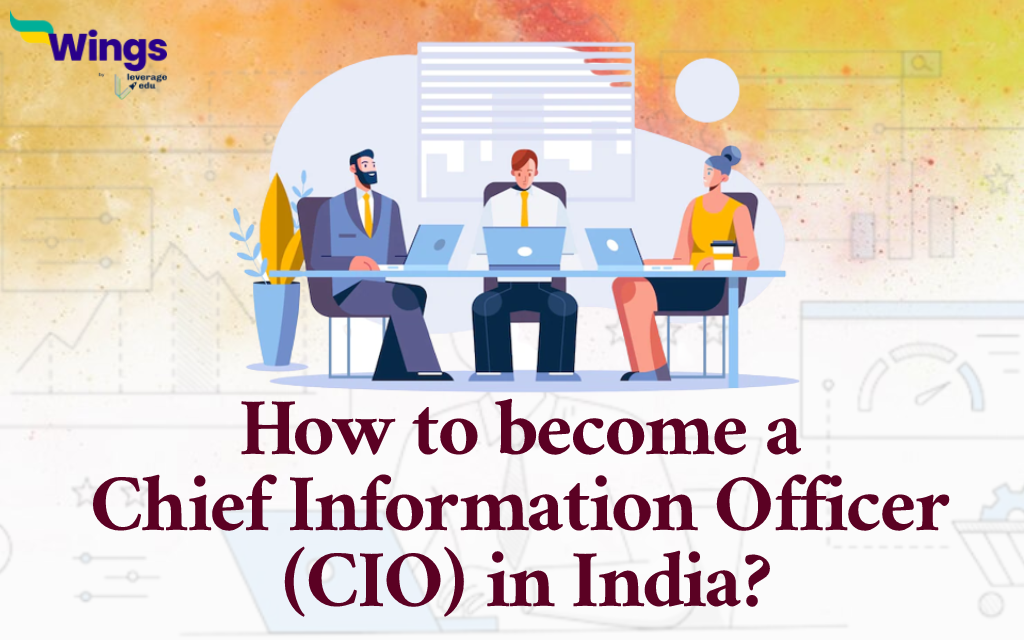A chief information officer (CIO) in a company is responsible for managing and implementing IT (information technology) solutions in the organisation. Other synonyms for this leadership role include IT director and chief digital officer (CDIO). These executives align IT technologies and solutions with the organisational goals by identifying the most viable solutions for the enterprise.
Contents
Who is a Chief Information Officer?
A CIO is in a leadership role in an organisation. This senior executive has to formulate and implement IT strategies and streamline and manage systems to achieve the goals of the concerned business entity. This IT professional needs to possess in-depth knowledge of technological developments, digital advancements, and business operations. Being in an authoritative position, a chief information officer is endowed with the responsibility of conveying information about all IT developments and solutions across every department.
Relevant Read: How to Become a Hardware Engineer in India?
How to Become a Chief Information Officer?
If you aspire to become a CIO in India then you must have a background in computer science and information technology. You need to have hands-on experience as a team lead or a project manager to take on the responsibility of a CDIO. Having an MBA degree is the cherry on the cake for the professional development of an IT professional who aspires to become an IT director.
Here is a step-by-step guide to becoming a chief information officer in India:
Step 1: Complete 10+2 in the science stream (Physics, Chemistry, Mathematics, and Computer Science/Application) from a recognised education board. Students must score a minimum of 50% in Physics and Mathematics in their Class 12 board or an equivalent examination.
Step 2: Appear for Engineering entrance examinations to pursue engineering courses, preferably an IT or Computer Science/Application course, at different institutions. The most popular entrance examinations in India are:
- Joint Entrance Examination (JEE) Mains and Advanced
- West Bengal Joint Entrance Examination (WBJEE)
- Birla Institute of Technology and Science Admission Test (BITSAT)
- Vellore Institute of Technology Engineering Entrance Examination (VITEEE)
Step 3: After clearing the entrance examination, students should pursue the below-mentioned courses to acquire the knowledge and skills required for an IT professional:
- B.Tech in Information Technology
- B.Tech in Robotics Engineering
- B.Tech in Computer Science
- B.Tech in Power Engineering
- B.Tech in Electrical Engineering
- B.Tech in Manufacturing Engineering
- Bachelor of Computer Applications (BCA)
- B.Tech in Civil Engineering
- B.Tech in Computer Science and Engineering
Step 4: After completion of a four-year bachelor course, graduates can either opt for a job as an IT professional and become a CIO in subsequent years or pursue a postgraduate degree in the following courses to prepare themselves for a CIDO:
- Master of Computer Applications (MCA)
- Master of Business Administration (MBA)
- M.Tech in Electrical Engineering
- M.Tech in Computer Science
- Master of Business Analytics
- M.tech in Civil Engineering
- M.Tech in Computer Science and Engineering
- M.Tech in Robotics Engineering
- M.Tech in Manufacturing Engineering
- M.Tech in Mechanical Engineering
Step 5: IT professionals and engineering students are advised to opt for certifications such as Project Management Professional (PMP), CompTIA Project+, XML Developer course by Vskills, and Certified Network Security Open Source Software certifications to add new skills to their kitty and accelerate their career.
Also Read: How to Become a CEO?
Skills Required to Become a CIO
An IT director needs to have the following skills to excel in his/her/their career:
Relevant Read: How to Become a Chief Technology Officer (CTO) in India?
Roles and Responsibilities
A CIO is involved in the decision-making process of any enterprise, owing to their responsibility of bridging the gap between all departments by implementing IT solutions and policies that are in tune with the goals of the firm. They are responsible for the overall development of the IT department of the organisation. Given below are the responsibilities of a CIDO:
- Oversee development and implementation of IT solutions.
- Implement network infrastructure.
- Supervise the implementation of policies and procedures in the IT domain.
- Ensure that the latest technologies are being used in the development of the organisation.
- Prepare technical reports.
- Provide conclusions and recommendations on IT projects.
- Create a strategic framework to enhance the productivity of employees.
- Analysing all components of computer and networking systems in the business entity.
Relevant Read: How to Become a Statistical Assistant in India?
Salary
The average annual salary of a chief information officer in India is INR 50 lakh. The annual salary range of this senior IT executive is somewhere between INR 22 lakh to INR 102 lakh. The estimated take-home salary of an IT director is INR 2.92 lakh to INR 3.03 lakh per month.
FAQs
Ans. Anyone aiming to become a CDIO in India must have a B.Tech or BCA degree. These graduates can reach this leadership position by showing their mettle in the job. Additionally, these graduates can pursue an MBA, M.Tech, or MCA to march toward an IT director.
Ans. The average annual salary of an IT director in India is INR 50 lakh.
Ans. Key roles of an IT director are: to oversee the development and implementation of IT solutions, implement network infrastructure, supervise the implementation of policies and procedures in the IT domain, ensure that the latest technologies are being used in the development of the organisation, and prepare technical reports.
Learn about different careers in India with Leverage Edu. Get regular updates about different jobs on Facebook, Instagram, LinkedIn, and Twitter.
 One app for all your study abroad needs
One app for all your study abroad needs














